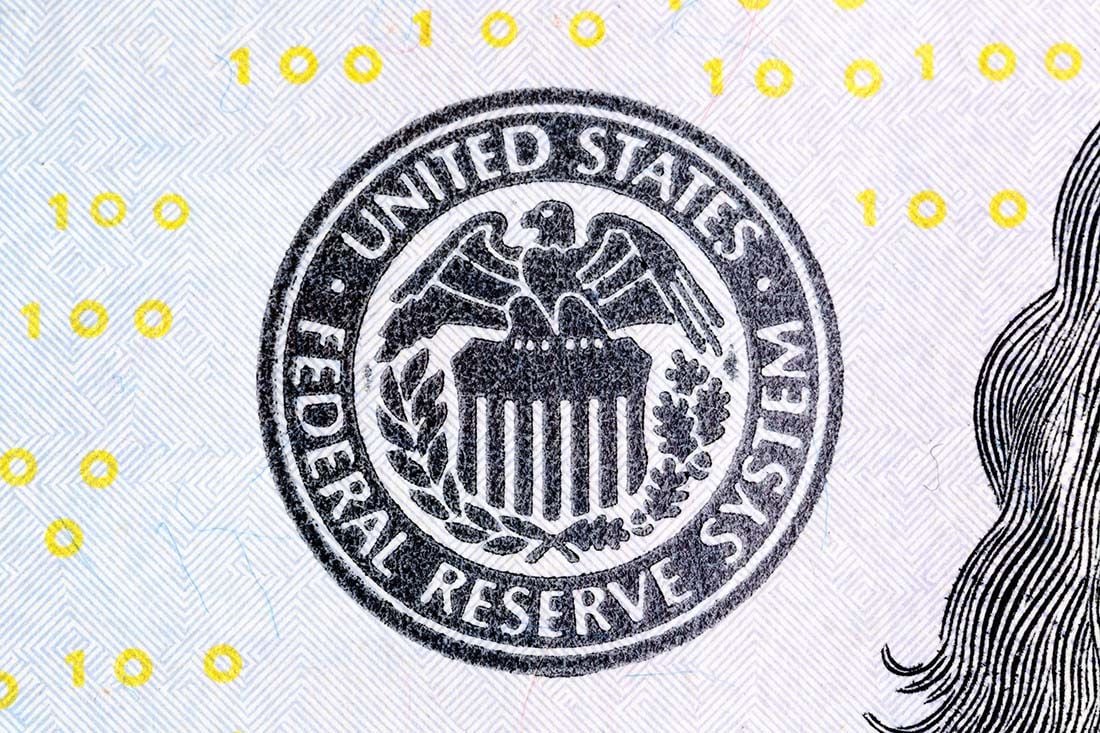US Dollar on Cusp of Renewed Downtrend as Faster-Fed Fails to Inspire the Market
- Written by: James Skinner
- USD falls even after Fed raises interest rate and adds to "dot plot".
- Signals faster rate rises to come but market shrugs, eyes "neutral rate".
- Looming "neutral rate" zone limits further upside to US interest rates.

© Dmytro Synelnychenko, Adobe Stock
The US Dollar fell broadly Thursday even after the Federal Reserve raised its interest rate for a second time in 2018 and signalled to markets that it will soon step up the pace at which it tightens US monetary policy, suggesting the two-month-long rally in the greenback may now be exhausted.
US rate setters raised the Federal Funds rate range to between 1.75% and 2% on Wednesday, from 1.5% to 1.75% before, and added another black mark to the so called "dot plot". The dot plot now shows a majority of Federal Open Market Committee (FOMC) members expect to raise rates two more times in 2018 and three more times in 2019.
"That means the Fed’s median interest rate forecast is now in line with our own long-held forecast for this year. Where we differ is in expecting a slowdown in economic growth next year to limit the Fed to only two more rate hikes in the first half of 2019," says Michael Pearce, a US economist with Capital Economics.
FOMC members also made the decision to hold press conferences after each and every future meeting, rather than the quarterly conferences the Fed has held until now, suggesting the next hike could come at any other meeting this year. Markets had become accustomed to the idea the Fed would only raise rates on four specific dates, all corresponding with a press conference, annually.
"This increases the Fed’s flexibility and reduces the potential for a shock since all meetings will now be considered “live”," Pearce adds.
Despite the apparent "hawkishness" of the Fed on Wednesday, as well as a de facto promise of higher rates to come, traders offered the US Dollar lower during the overnight session and into the London morning Thursday.
The Dollar index briefly reached a peak of 94.0 in the immediate aftermath of the announcement but was sold heavily overnight and quoted 0.2% lower at 93.35 Thursday. The Pound-to-Dollar rate was 0.38% higher at 1.3431 while the Euro-to-Dollar rate was 0.14% higher at 1.1819.
The greenback has risen strongly in the last two months, with the Dollar index converting a 4% 2018 loss into a 1.7% profit, as American bond yields rose over and above those of their international counterparts.
This was in part due to hopes the Fed would soon pick up the pace of its interest rate rises, as well as due to a superior pace of economic growth in the US when compared with other parts of the developed world.
"The USD had a perfect setup: a hike, a marginally more hawkish Fed, the announcement of additional press conferences, a move higher in the median dot-plot yet the USD still could not hold onto its post-decision gains. Though this may partly be due to the more important ECB decision a few hours from now, we think this is rather telling and potentially a sign that the USD uptrend is nearing an exhaustion point," says Michael Hanson, head of global macro strategy at TD Securities.
Commentary on the so called "neutral rate" from Fed chair Jerome Powell may have been behind the negative response from markets Thursday, with the newly minted head of the FOMC emphasising to reporters that the Fed would be "data dependent" as monetary policy approaches the "neutral rate zone".
The neutral rate is the peak rate refers to an estimation of the rate at which US monetary policy become neutral, and so having neither a stimulative nor contrationary influence on the US economy. The Fed estimates that the neutral rate - which is notoriously difficult to estimate - is somewhere between 2.3% and 3.5%.
"This approach is motivated in part by the fact that key quantities, including the neutral policy rate and the natural rate of unemployment, remain highly uncertain. This increases the risk for start-stop policy changes in 2019 and beyond as the Fed reacts to near-term risks," Hanson adds.
Once the Fed Funds rate reaches this neutral level, or rises above it, conventional thinking dictates that it is only a matter of time before economic growth and inflation slow to the extent where it becomes necessary for the Federal Reserve to start cutting interest rates.
As a result, when Fed policy begin to approach the so called neutral level, traders could become less and less willing to reward additional interest rate rises with a bid for the Dollar for fear of being caught on the wrong side of the market at a later date.
"It is likely that market interests will focus on the considerations on neutral interest rate levels. The more likely a slowing of the Fed rate hike cycle becomes, the more the tightening signals expected from the ECB tomorrow are likely to be reflected in the EUR-USD exchange rate. And the more worthwhile it may seem to investors to reallocate from US dollar into euro so as to be ahead of the curve," says Esther Reichelt, an analyst at Commerzbank.
Advertisement
Get up to 5% more foreign exchange by using a specialist provider to get closer to the real market rate and avoid the gaping spreads charged by your bank when providing currency. Learn more here




